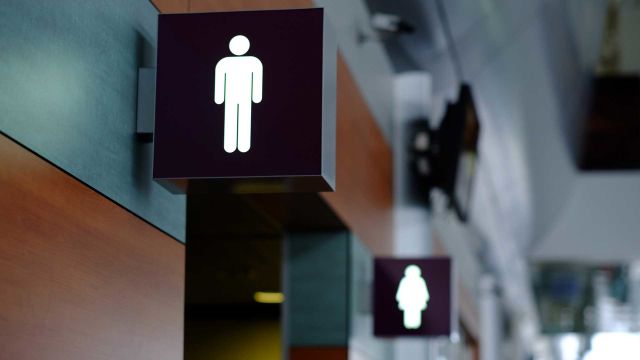To squat or to sit—that is the question. Inventions like the Squatty Potty have sparked conversations about the right and wrong way to poop.
Unnatural squatting, or sitting on the toilet, may lead to difficulty pooping because it puts pressure on the rectum, closing it off and restricting stool from passing easily. This may cause you to strain, or push very hard to pass stool. Aside from the discomfort, straining while you poop can also lead to hemorrhoids—swollen and inflamed veins in the rectum and anus that can be painful and bleed.
Straining on the toilet could also overstimulate the vagus nerve, which extends from the brain to the colon and influences many essential bodily functions, including immune response, digestion, and heart rate. Overstimulation of this nerve can cause your heart rate and blood pressure to drop temporarily and decrease blood flow to the brain for a short time. In rare cases, this may cause you to feel faint or dizzy. If this happens, stop straining and lower your head between your knees for a few minutes to improve blood flow to your brain.
Proper pooping technique
For optimal expulsion, sit on the toilet with your knees positioned higher than your hips. You can use a footstool to help you achieve this position. A small October 2018 study published in the Journal of Clinical Gastroenterology suggests this really can help. The study involved 52 men and women. Of these volunteers, 44 percent strained while pooping and 29 percent had trouble completely emptying their bowels. Over the course of four weeks, researchers tracked more than 1,100 bowel movements, including 384 that were facilitated with a footstool. They found that using a stool enabled 71 percent of participants to poop more quickly and 90 percent did so with greater ease.
There are a few other ways you can position your body during a bowel movement to help reduce straining. First, place your elbows on the tops of your thighs and lean your upper body forward. With your feet planted on the ground or stepstool, take deep breaths while bulging the abdomen forward. This movement will add downward pressure, which will help you pass stool. Another option: Squat over the toilet instead of sitting.
Other ways to make pooping easier
You can also use your body’s natural timing to help you poop. Your bowels are most active after a meal and it’s usually the time when stool will pass most easily. Use that to your advantage and when you feel the urge, go to the bathroom. If you frequently wait or hold in your poop, then you could decrease the strength of your body’s signals over time.
Eating enough fiber can also help move your bowels along. Adults should maintain a fiber intake of about 28 to 35 grams per day based on a 2,000- calorie diet. Many fruits and vegetables are good sources of natural fiber. One medium apple contains about 4.4 grams of fiber, one medium pear contains about 5.5 grams, and legumes, such as black beans, contain about 15 grams per cup.
How to retrain your bowels
If you’re still having problems pooping, then a healthcare provider (HCP) might prescribe a regimen called bowel retraining. Bowel retraining creates a schedule for people with frequent and uncontrollable bowel movements or constipation. After reviewing your medical history, diet, medications, and the timing of your bowel movements, your HCP might start you on an individual plan to improve the consistency of your stool and help you become more regular. This may include a bowel movement routine, which involves identifying a specific time of day that you will try to use the bathroom until your body adopts its own schedule. A healthy, fiber-filled diet, increased water consumption and adequate exercise are often part of the plan to get your bowels back on track. If things still aren't moving the way they should, your HCP may also recommend over-the-counter or prescription medications.






